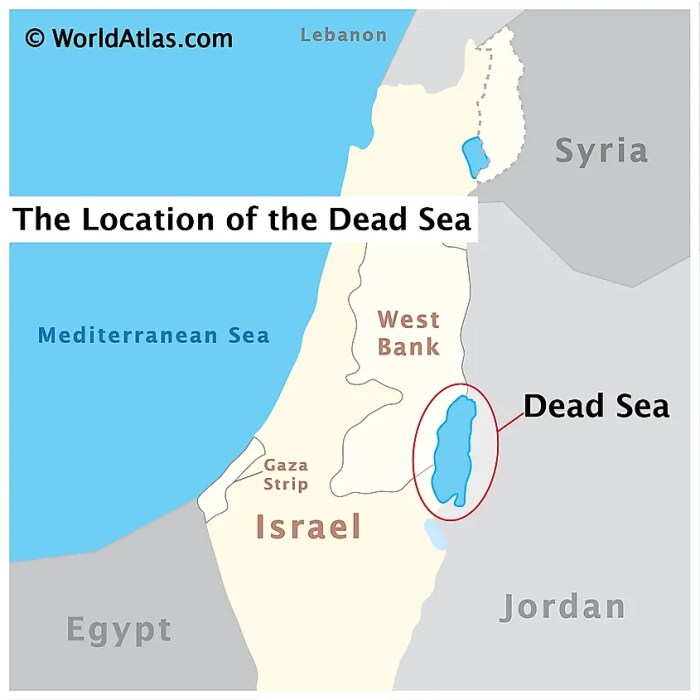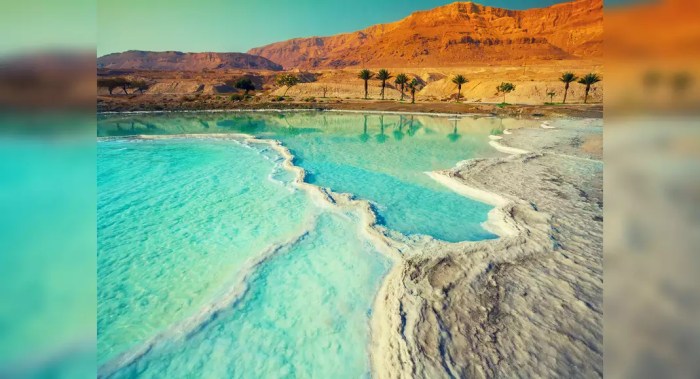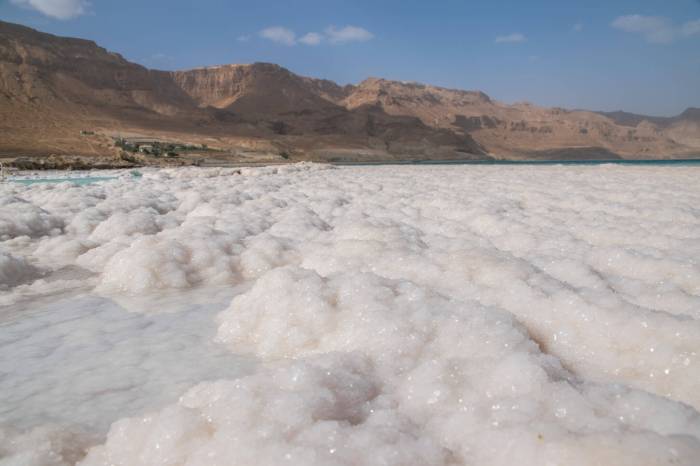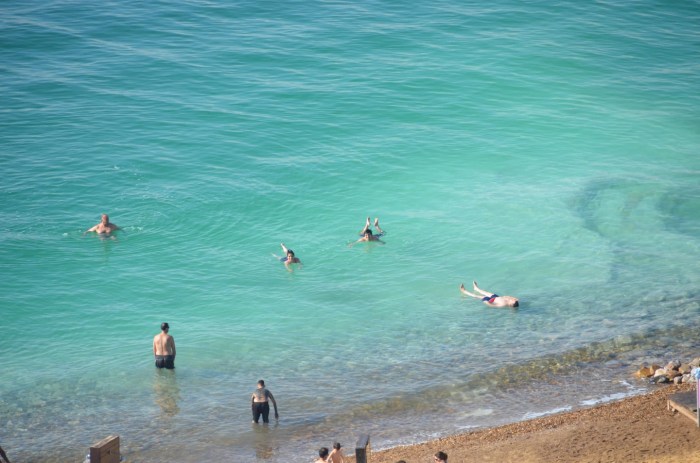Dead sea in asia crossword – Unravel the mysteries of the Dead Sea, an enigmatic body of water nestled in the heart of Asia, through an engaging crossword puzzle. Embark on a journey to uncover its unique geographic location, remarkable physical characteristics, historical significance, and therapeutic benefits.
From its unparalleled salinity to its ancient civilizations, the Dead Sea holds a wealth of fascinating stories waiting to be explored. Dive into this crossword adventure and expand your knowledge about this extraordinary natural wonder.
Dead Sea Geographic Location: Dead Sea In Asia Crossword

The Dead Sea is a salt lake bordered by Jordan to the east and Israel and the West Bank to the west. It is located in the Jordan Rift Valley, which is part of the Great Rift Valley. The Dead Sea is the lowest point on Earth, with a surface elevation of about 430 meters (1,410 feet) below sea level.
The Dead Sea is about 30 miles (48 kilometers) long and 9 miles (14 kilometers) wide. It has a surface area of about 390 square miles (1,010 square kilometers). The Dead Sea is very salty, with a salinity of about 34%. This means that the water is about 10 times saltier than the ocean.
The Dead Sea is a popular tourist destination. People come to the Dead Sea to float in the water, which is said to have therapeutic properties. The Dead Sea is also home to a number of ancient ruins, including the ruins of the Roman city of Sodom.
The Dead Sea is a unique and beautiful place. It is a place of great natural beauty and historical significance.
Proximity to Other Notable Landmarks or Bodies of Water
The Dead Sea is located near a number of other notable landmarks and bodies of water. These include:
- The Jordan River
- The Sea of Galilee
- The Negev Desert
- The Judean Mountains
- The Dead Sea Rift
The Dead Sea is a popular destination for tourists and pilgrims. It is a place of great natural beauty and historical significance.
Dead Sea Physical Characteristics

The Dead Sea is a salt lake bordered by Jordan to the east and Israel and the West Bank to the west. It is one of the world’s most saline bodies of water, with a salinity of around 34%, making it nearly 10 times saltier than the ocean.
Solving the “Dead Sea in Asia” crossword puzzle can be a challenge, but with the help of external resources like dog tales nova answer key , you can uncover the correct answers. Once you’ve found the solution, you’ll be able to complete the puzzle and gain a deeper understanding of the Dead Sea’s geographical location in Asia.
This extreme salinity gives the Dead Sea its unique physical characteristics.
The high salinity of the Dead Sea is due to several factors. First, the Dead Sea is located in a closed basin, meaning that it has no outlet to the ocean. As a result, the water that evaporates from the Dead Sea cannot be replaced by freshwater, and the salt concentration in the lake gradually increases.
Second, the Dead Sea is fed by several rivers that carry dissolved salts from the surrounding mountains. These salts further contribute to the Dead Sea’s high salinity.
Water Composition and Properties
The water of the Dead Sea is composed of a variety of salts, including sodium chloride, magnesium chloride, and potassium chloride. These salts give the Dead Sea its characteristically bitter taste and pungent odor. The high salinity of the Dead Sea also makes it very dense, with a density of around 1.24 kg/L.
This density makes it difficult for people to swim in the Dead Sea, as they tend to float on the surface.
The Dead Sea’s unique physical characteristics have made it a popular destination for tourists and health enthusiasts. The high salinity of the water is said to have therapeutic benefits for a variety of skin conditions, and the mud from the Dead Sea is also used in cosmetic products.
Dead Sea Historical Significance
The Dead Sea has held immense historical significance throughout the ages, playing a pivotal role in ancient civilizations and religious traditions.
In ancient times, the Dead Sea region was home to several thriving civilizations, including the Moabites, Edomites, and Ammonites. These civilizations established prosperous trade routes and developed advanced irrigation systems to cultivate the fertile lands surrounding the sea.
Religious Significance
The Dead Sea holds particular religious significance for both Jews and Christians. According to Jewish tradition, the area around the Dead Sea is believed to be the location of the biblical cities of Sodom and Gomorrah, which were destroyed by God for their wickedness.
For Christians, the Dead Sea is associated with the baptism of Jesus Christ by John the Baptist in the Jordan River, which flows into the Dead Sea. The region is also mentioned in the Bible as a place of refuge and healing.
Archaeological Discoveries
The Dead Sea region has yielded significant archaeological discoveries, including the famous Dead Sea Scrolls. These ancient manuscripts, written on parchment and papyrus, contain biblical texts and other religious writings from the Jewish community that lived in the area around the Dead Sea from the 3rd century BCE to the 1st century CE.
Dead Sea Tourism and Health Benefits

The Dead Sea is a unique natural wonder that attracts millions of tourists and health enthusiasts each year. Its extraordinary water and mud possess therapeutic properties that have been renowned since ancient times.
The high concentration of minerals, including magnesium, potassium, and bromine, in the Dead Sea water creates a buoyant environment that allows visitors to float effortlessly. This buoyancy relieves pressure on joints and muscles, providing relief from various ailments such as arthritis and rheumatism.
Therapeutic Mud, Dead sea in asia crossword
The Dead Sea mud is rich in minerals and organic compounds that have been shown to have therapeutic effects on the skin. It is commonly used in skincare treatments to improve skin elasticity, reduce inflammation, and promote cell regeneration.
Tourist Attractions and Activities
Beyond its health benefits, the Dead Sea also offers a range of tourist attractions and activities. Visitors can enjoy:
- Floating in the salty waters
- Applying Dead Sea mud masks
- Visiting historical sites such as Masada and Qumran
- Hiking along the scenic Dead Sea trails
- Relaxing at luxury resorts and spas
Dead Sea Environmental Challenges

The Dead Sea, known for its unique hypersaline environment, faces several environmental challenges that threaten its existence and ecosystem.
One of the most pressing issues is its rapidly shrinking water levels. The sea’s surface area has been decreasing at an alarming rate, with water levels dropping by over 1 meter per year.
Causes of Shrinking Water Levels
- Water Diversion:The Jordan River, which historically fed the Dead Sea, has been diverted for agricultural and domestic use, reducing the inflow of freshwater.
- Evaporation:The high temperatures and low humidity in the Dead Sea region contribute to excessive evaporation, further exacerbating water loss.
- Mineral Extraction:Industries around the Dead Sea extract minerals such as potash and bromine, which involves pumping brine from the sea, further depleting its water.
Consequences of Shrinking Water Levels
- Loss of Biodiversity:The unique ecosystem of the Dead Sea, including its salt-tolerant organisms, is threatened by the changing salinity and water levels.
- Increased Salinity:As water levels decrease, the concentration of salt in the sea increases, making it more difficult for organisms to survive.
- Sinkholes:The shrinking water levels create sinkholes and other geological hazards, damaging infrastructure and threatening nearby communities.
Efforts to Preserve and Protect the Dead Sea
Recognizing the urgency of these challenges, several efforts are underway to preserve and protect the Dead Sea:
- Water Conservation:Governments and organizations are implementing water conservation measures to reduce water diversion and increase the flow into the Dead Sea.
- Mineral Extraction Regulation:Regulations are being developed to ensure sustainable mineral extraction practices that minimize water loss and environmental impact.
- Restoration Projects:Scientists and conservationists are exploring innovative solutions to restore water levels, such as desalination plants and water transfer projects.
FAQ Explained
Where is the Dead Sea located?
The Dead Sea is located in the Jordan Rift Valley, between Jordan to the east and Israel and the West Bank to the west.
Why is the Dead Sea so salty?
The Dead Sea’s high salinity is due to the lack of an outlet to the ocean. Evaporation leaves behind minerals, increasing the water’s salt concentration.
What is the Dead Sea known for?
The Dead Sea is renowned for its therapeutic properties, attracting visitors seeking relief from various ailments. Its mineral-rich waters and mud are believed to have healing benefits.